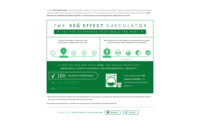Quantifying the Environmental Impact of Secondary Packaging

The term “sustainability” is heard in boardrooms everywhere these days because it is a concept that embraces both environmental and bottom-line business concerns. For product packagers, sustainability means reconciling what can be conflicting goals: minimizing whatever negative impact their packaging may have on the environment while adequately protecting products during shipping and handling. Packagers today are facing increasing demands for “sustainability” from every direction – consumers, retailers and nonprofit watchdog groups – with few of these groups offering specific guidelines on how to measure it. What’s more, packagers are encouraged to achieve these dual goals while also controlling the costs of packaging to their customers.
One organization that has tried to define sustainability is the Sustainable Packaging Coalition, an industry working group dedicated to transforming packaging into a system that encourages a sustainable flow of materials. This group lists these ideal attributes of sustainable packaging:
A. Beneficial, safe and healthy for individuals and communities throughout its life cycle
B. Meets market criteria for performance and cost
C. Sourced, manufactured, transported and recycled using renewable energy
D. Maximizes the use of renewables or recycled source materials
E. Manufactured using clean production technologies and best practices
F. Made from materials healthy in all probable end-of-life scenarios
G. Physically designed to optimize materials and energy
H. Effectively recovered and utilized in biological and/or industrial cradle-to-cradle cycles
A new white paper from Delkor Systems Inc. addresses the environmental advantages of pad shrink packaging compared to traditional RSC (regular slotted containers) for secondary packaging of cans, rigid plastic bottles, glass jars, plastic jars, tapered plastic cups and paperboard canisters. Read it here.
Looking for a reprint of this article?
From high-res PDFs to custom plaques, order your copy today!








